Sequel of the preceding post The Warped Science of Interstellar (4/6)
In november 2014, the Hollywood blockbuster and science-fiction movie Interstellar was released on screens and much mediatic excitation arose about it.
This is the fifth of a series of 6 posts devoted to the analysis of some of the scientific aspects of the film, adapted from a paper I published last spring in Inference : International Review of Science.
TIME TRAVEL INSIDE GARGANTUA
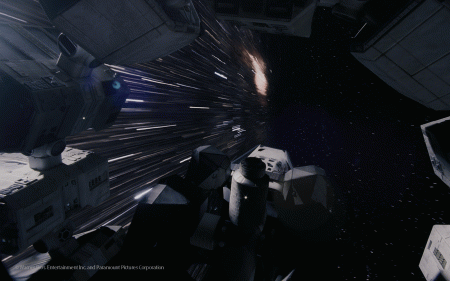
In the last part of the film, the main character, Cooper, plunges into Gargantua. There, beware the tidal forces breaking anything up ! Indeed in the Schwarzschild geometry, the tidal forces become infinite as r -> 0 ; so, even for a supermassive black hole like Gargantua, once past safely the event horizon and approaching the central singularity, everything will be ultimately destroyed. Happily for the continuation of the story, Gargantua has a high spin, and its lethal singularity has the shape of an avoidable ring. Thus the space-time structure allows Cooper to use the Kerr black hole as a wormhole ; he avoids the ring singularity and transports to another region of space-time. In the movie he ends up in a five-dimensional universe, in which he will be able to go backwards in time and communicate with his daughter by means of gravitational signals.

A lot of research has been done on whether the laws of physics permit travel back in time or not. Black hole physics gives interesting results but no firm answers. As seen in the post The Warped Science of Interstellar (1/6), according to Penrose-Carter diagrams a rotating black hole could connect myriads of wormholes to different parts of the space-time geometry. Since two events can differ in time as well as in space, it would be possible to pass from one given position at a given time, along a carefully chosen trajectory, through a wormhole, and arrive at the same position but at a different time, in the past or future. In other words, the black hole could be a sort of time travel machine.
Noneless a journey back through time is an affront to common sense. It is difficult to accept that a man could travel back through time and kill his grandfather before he has had the time to produce children. For the murderer could not have been born, and could not have murdered him, and so on… Such time paradoxes have been pleasantly presented in the celebrated series of movies Back to the future.
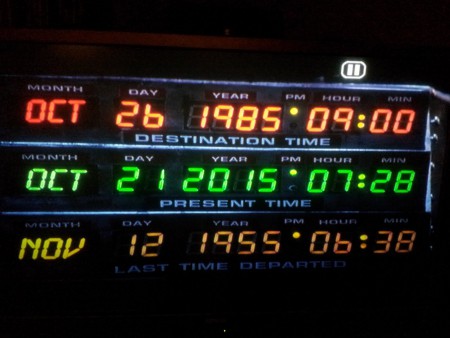
A journey into the past violates the law of causality, which requires that the cause always precedes the effect. However, causality is a rule imposed by logic, not by the theory of relativity. Causality is implicit in Special Relativity, where there is no gravitation. Here, travelling into the past requires motion faster than light, and is absolutely forbidden. However in general relativity, the universe is curved by gravitation, and the space-time geometry can be distorted – by a wormhole associated to a rotating black hole, for example –, enabling the past to be explored without having to go faster than light.
Do such strange time warps exist in the Universe ? Perhaps yes at the quantum scale – i.e. at a size much less than proton’s radius –, due to the quantum fluctuations of space-time. If microscopic black holes were created soon after the Big Bang[i], the laws of quantum physics would govern them, microscopic wormholes would also be created, and some elementary particles could furtively take these transitory tunnels in order to move back in time. It is not theoretically impossible that very special conditions in the early universe lead to the formation of mini-wormholes that have grown to become macroscopic after a phase of primordial inflation.
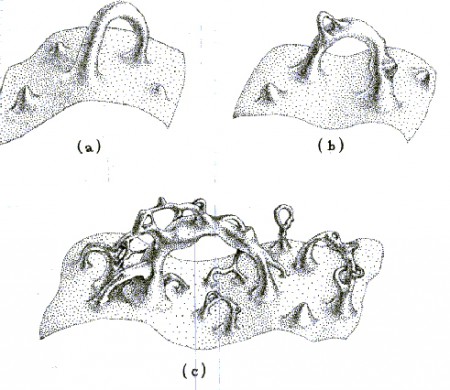
As a consequence, some supermassive black holes, such as the Gargantua depicted in Interstellar, could be fossil giant wormholes, namely open gates leading to other regions of the cosmos, or to parallel universes. And why not a 5-dimensional universe ? This is precisely what is assumed in the movie.
THE FIFTH DIMENSION
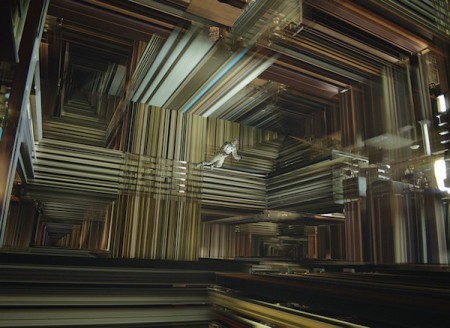
From this moment, the story becomes more than ever speculative – as much as the new theories that subtend it. The standard theory of gravity – general relativity – describes our universe as geometry of three-dimensional space plus one dimension of time. This is sometimes called 3 + 1 space, and it gives a very accurate description of the universe we observe. But theorists like to play around with alternative models to see how they differ from regular general relativity. They may look at 2 + 1 space, a kind of « flatland » with time. There is not necessarily anything « real » about these models, and there is not any experimental evidence to support anything other than 3 + 1 gravity. But alternative models are useful because they help us gain a deeper understanding of gravity.
One of these alternative models stems from the so-called brane cosmologies[ii]. The central idea of brane cosmologies is that our 4-dimensional universe is restricted to a « brane » inside a higher-dimensional space, called the « bulk » (an analogue of the science-fiction notion of « hyperspace »). In the brane models, some of the extra-dimensions are possibly infinite, and other branes can be moving through the bulk. Gravitational interactions with the bulk can influence our brane, and thus introduce effects not seen in standard cosmological models.
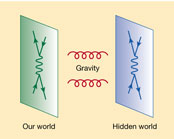
Lisa Randall and Raman Sundrum[iii] have proposed one of these brane cosmologies at the end of the 1990’s. There are two different versions of it, but both assume that our 4-dimensional universe is a brane inside a 5-dimensional space-time, the bulk. In such a framework, we can imagine (although very unrealistically) to create an artificial mini-black hole and mini-wormhole, for instance in a powerful particle accelerator such as the CERN’s Large Hadron Collider, and make it growing. In a Randall-Sundrum universe, matter and light cannot propagate in the fifth dimension, and gravitational waves are the only physical entities that can propagate in the bulk. It is exactly what is suggested in the movie. The screenwriters have imagined a very advanced civilization born into the bulk, able to master the laws of gravity to create wormholes and influence our usual brane by means of gravitational waves. Since we learn at the end that this advanced civilization is nothing else than our future humanity, we realize that one of the « philosophical » issues of the film is that humanity should tend to understand the laws of quantum gravity and master the new physical effects involved in order to save itself !
REFERENCES
[i] B.J. Carr, S.W. Hawking : Black holes in the Eearly universe, Mon. Not. Roy. Astron. Soc. 168, 399 (1974).
[ii] P. Brax, C. ven de Bruck : Cosmology and Brane Worlds: A Review, arXiv:hep-th/0303095 (2003).
[iii] L. Randall, R. Sundrum : Large Mass Hierarchy from a Small Extra Dimension, Physical Review Letters 83 (17), 3370–3373 (1999).
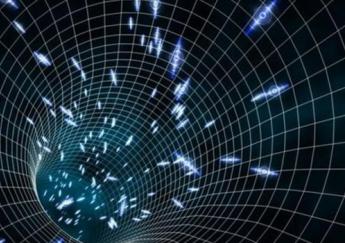
It’s remarkable to pay a quick visit this web page and reading the views of all
friends concerning this post, while I am also eager of getting knowledge.
Dear Professor Luminet:
Your articles are very enjoyable and instructive to the non specialist.
I wonder, assuming that all BH are rotating and that all have ring singularities, what would be the geometry of the resultant ring after a collision.
And, how would it depend on the angle of the encounter, as well as the sense of rotation.
Could one ring cross inside the other larger one?
Could gravitational waves pass through a BH?
And could, after “feeding” the monster with, let’s say a star, the Mixmaster oscilation (as described in Thorne’s book) emerge as gravitational waves from inside the fact horizon.
That is, could G waves emerge from a BH?
Thank you so much for your time and consideration.
With my best wishes,
Dr. Albert Ardao
New London, CT
USA